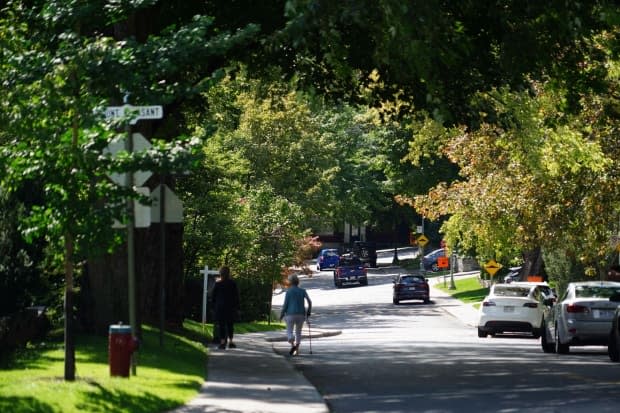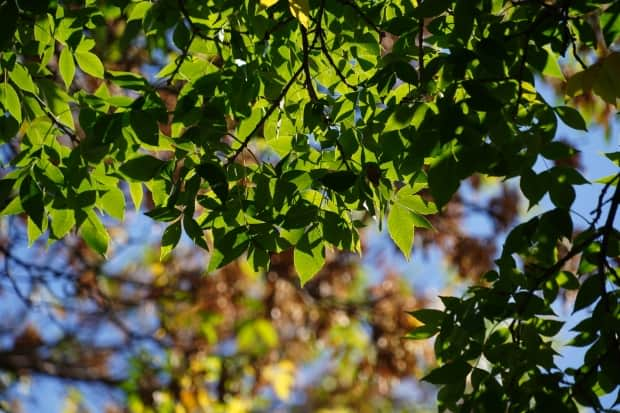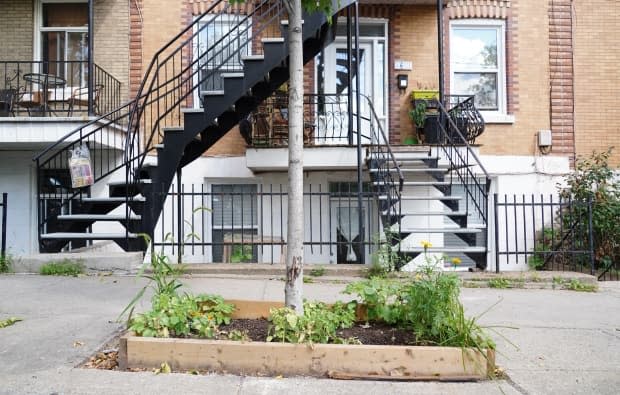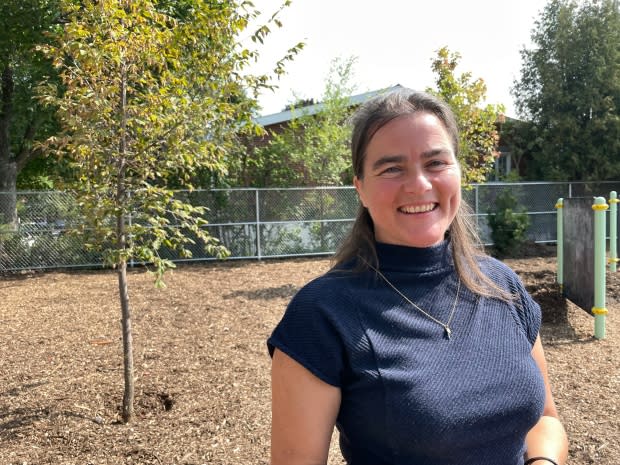Why trees are more common in higher-income neighbourhoods

The trend is clear: the wealthier your neighbourhood, the more likely you will be surrounded by trees.
A CBC News analysis of data from the City of Montreal and Statistics Canada shows the higher the median income of a neighbourhood, the more extensive the tree cover.
In other Canadian cities and beyond, researchers are tracking similar dynamics between green space and socioeconomic status, and looking for solutions to address the imbalance.
"The general pattern is that wealthier areas — more privileged neighbourhoods — tend to have not only higher tree cover, but also a greater diversity of species," said Carly Ziter, a biology professor at Concordia University in Montreal who specializes in urban ecology.
"Those patterns do seem to hold in many of our cities."
The need for trees, and the cooler, better air they provide, has become ever more pressing as the climate warms and cities are subjected to more extended periods of extreme heat, Ziter said.

New research has pointed to more far-reaching effects of trees, from an increase in tourists in leafier commercial areas to tangible improvements in an individual's mental health when surrounded by urban green space.
Montreal endured two lengthy heat waves last month, leading to the hottest August on record.
Ziter said improved tree cover in more dense, low-income areas would help mitigate the impact of future heat waves.
"Trees are like mini air conditioners. They reduce temperature not only by providing shade, which I think is what we tend to think of, but also by evaporating water," she said.
"What we're seeing here is kind of a double hit, where the neighbourhoods who likely have the highest access to cool, air-conditioned spaces also have the highest access to this natural cooling provided by trees."
Clear divide
CBC News calculated the percent of canopy in every census tract on the island of Montreal to three census variables: median household income, visible minority population and per cent of people living below the poverty line. Income showed the clearest correlation with tree cover.
The graphic below illustrates the correlation between household income and trees.
(At the highest income level, there is drop off because some wealthy households are situated near large industrial areas with little tree cover, such as the Bois-Franc neighbourhood of Saint-Laurent north of Montreal's Trudeau airport.)
Money buys greenery
One of the most pronounced divisions on the island of Montreal plays out between Parc-Extension, a low-income, diverse neighbourhood, and the adjacent, more affluent Town of Mount Royal.
One census tract in TMR has a median household income of $110,000, and trees cover roughly 30 per cent of the surface area.
In neighbouring Parc-Extension, where the median income is between $32,000 and $40,000, trees cover a far lower percentage of the neighbourhood — somewhere between six and 15 per cent, depending on the census tract.

Across the island, there is a correlation between tree cover and median household income.
One area of Westmount, for instance, has a median household income of $270,000 and tree cover of 39 per cent.
Nearby Snowdon, by contrast, has a median household income of $34,000 and 19 per cent cover.

The pattern extends to areas outside the city core, as well.
In the suburban West Island, Beaconsfield has more trees than Pierrefonds, which has a lower median income and a larger commercial area.

Further east, at Cité-Jardin, a section of Rosemont north of Maisonneuve Park, the canopy is far lusher than most of Hochelaga-Maisonneuve, which has a lower average income.

What's behind the disparity?
There are a number of reasons behind the link between income and tree cover, and they play off one another to further the divide between green neighbourhoods and those with more concrete, said Thi Thanh Hiên Pham, an expert in urban vegetation and professor at the University of Quebec in Montreal.
Research has shown that homes in neighbourhoods with more trees are more attractive on the real estate market, thereby increasing the value.
Such homes also tend to have bigger lots, where trees are able to spread their roots and grow.

At the same time, neighbourhoods with more valuable homes have more property tax revenue to plant and care for more trees, while low-income areas have more apartment buildings, where owners are less likely to be motivated to do the same.
Pham said there are exceptions, notably the storied neighbourhood of Old Montreal, where property is more expensive but tree cover can be as low as five per cent.
The area, much of which dates back to the 17th century, features narrow streets and sidewalks that make it difficult to plant trees or for those already in the ground to survive.
500,000 trees promised
Late last year, Montreal Mayor Valerie Plante committed to "plant, maintain and protect" 500,000 trees over the next decade as part of the city's 2020-2030 climate plan.
The plan commits, in particular, to putting more trees "in zones vulnerable to heat waves." It is also meant to mitigate the culling of thousands of ash borer trees on both public and private land in recent years.
In a statement, city spokesperson Karla Duval said Montreal is on track to plant 46,900 trees along with 6,000 shrubs in 2021. (Local borough initiatives aren't included in this tally.)
The publicly available city canopy data dates back to 2015. New data is slated to be made available at the end of the year, showing the state of the canopy in 2019.
Ziter said the pattern playing out in Montreal and other cities can be gradually rectified, but not only by putting money into low-canopy areas.
They must also be cared for and maintained as they get older.
"We love to plant trees and then we don't necessarily think as much about the care and maintenance of those trees and the city, especially, you know, a dense neighborhood," she said.
"It's a really hard place to grow up. If you're a tree, you've got not very good soil, you've got pollution, you've got people locking their bikes to you."

A new study examining Toronto, Gatineau-Ottawa, Montreal and Quebec City also found that not only are low-income areas more likely to have fewer trees, but those trees are also more susceptible to environmental challenges, meaning that neighbourhoods lacking urban forest are more at risk of losing it.
There are ways to protect young trees in the city, Ziter said, such as a better designed "soil cell" — the little box in the sidewalk where the tree grows — or widening sidewalks to give them more room.
Beyond the maple tree
Maples are the most common trees on the island, but there are plenty of others dotting the landscape — including ash, linden and honey-locusts.
Experts say a greater variety of species would help prevent the spread of disease and pests. Thousands of ash trees in Montreal, for instance, have fallen victim to the emerald ash borer, a tiny invasive beetle.
"The quantity is important but quality is even more important, to ensure the survival of the trees," said Malin Anagrius, the manager of Soverdi, a Montreal-based non-profit organization that plants trees around the city.

On a recent afternoon, a small crew was adding a mix of trees and shrubs to a school in Rosemont — tamarack, white pine and mountain ash among them.
"We do like to think that we democratize the green here in the city," Anagrius said.
'We try to focus on areas on that doesn't have as many trees as they should have because we know that tree canopy has a big effect on health."
On private property, Ziter said such programs designed to encourage and subsidize trees for citizens, schools and businesses are increasingly important.
Ziter and her team are trying to document the trees on private land. Right now, she's focusing on collecting information in the neighbourhood of Notre-Dame-de-Grâce, but the hope is to expand the project across the city.
"We often focus on tree planting because it feels very actionable, but we also need to keep the trees we have, that are contributing to our canopy already," she said.

